
Photoblog: Eastern Ghouta residents arrive in Idlib
Photoblog: Eastern Ghouta residents arrive in Idlib
See in pictures: Aaref Watad captures the moment rebel fighters and civilians join the thousands already settled in Idlib, northern Syria, after evacuating war-ravaged Eastern Ghouta.
3 min read
A rebel fighter steps off the bus carrying his baby daughter [Aaref Watad]
Syrian photographer Aaref Watad documented last week's arrivals in Idlib as thousands of civilians, rebel fighters and their families were forcibly evacuated from Eastern Ghouta after suffering for five years under siege of Bashar al-Assad's regime.
The photos show the busloads of evacuees arriving in Qalaat al-Madiq in Idlib, from the villages of Zamalka, Jobar and Arbin in what is known as Eastern Ghouta's central section.
Under a Russian-brokered deal, opposition faction Faylaq al-Rahman ceded the territory they controlled in the Damascus countryside, to the Syrian regime.
Civilians and rebel fighters were subjected to a ruthless escalation of the regime's military bombardment with daily airstrikes and shelling that forced Ghouta's residents to live in improvised underground shelters, deprived of food, water, ventilation and sunlight.
The photos were taken on March 27, a day when 6,000 people arrived at Qalaat al-Madiq after being transported from Eastern Ghouta.
The first priority for the response coordination team, including the Syrian Civil Defence, known as The White Helmets, as well as The Violet Organisation, is to transport the injured to hospitals and temporary healthcare centres.
The new arrivals wait for family members to arrive from the bus convoy, as they gather all their belongings they could manage from their homes.
The evacuees will be resettled in villages in the opposition-held Aleppo countryside in northwestern Syria.
In relative to their hometown, Idlib will provide some peace and security. However the rebel-held province is still subject to Russian and Syrian regime airstrikes, as Bashar al-Assad aims to retake the whole of the country from opposition control.
During the Assad regime's escalation on Eastern Ghouta, more than 1,630 civilians were killed, including at least 330 children. Eastern Ghouta's residents were forced to live in poorly ventilated underground shelters without sufficient food, water or medical supplies.
The offensive in Ghouta has been one of the deadliest of the war. Currently, at least 170,000 people have been evacuated out of the area over the past two weeks.
Having forced all but one of the rebel factions to make deals ceding parts of Eastern Ghouta, the Assad regime now controls 90 percent of Eastern Ghouta’s territory, the loss of which was a painful blow to opposition factions.
The Syrian conflict began when the Baath regime, in power since 1963 and led by President Bashar al-Assad, responded with military force to peaceful protests demanding democratic reforms during the Arab Spring wave of uprisings, triggering an armed rebellion fuelled by mass defections from the Syrian army.
According to independent monitors, hundreds of thousands of civilians have been killed in the war, mostly by the regime and its powerful allies, and millions have been displaced both inside and outside of Syria. The brutal tactics pursued mainly by the regime, which have included the use of chemical weapons, sieges, mass executions and torture against civilians have led to war crimes investigations.
Aaref Watad is a journalist and photographer from northern Syria. Follow him on Twitter @aboshamariha
Under a Russian-brokered deal, opposition faction Faylaq al-Rahman ceded the territory they controlled in the Damascus countryside, to the Syrian regime.
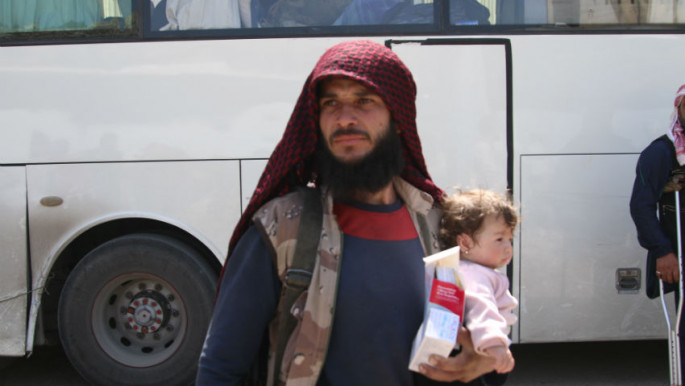 |
|
| [Aaref Watad] |
Civilians and rebel fighters were subjected to a ruthless escalation of the regime's military bombardment with daily airstrikes and shelling that forced Ghouta's residents to live in improvised underground shelters, deprived of food, water, ventilation and sunlight.
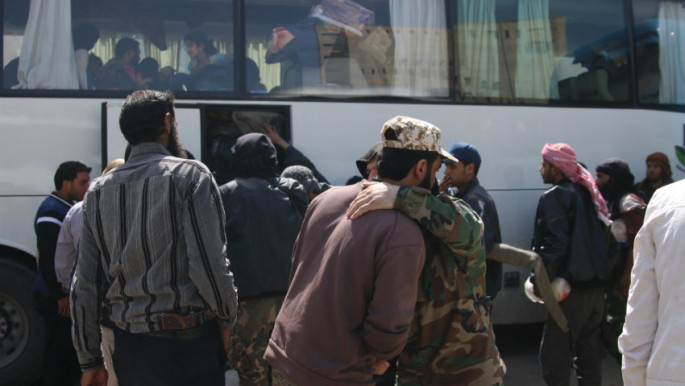 |
|
| [Aaref Watad] |
The photos were taken on March 27, a day when 6,000 people arrived at Qalaat al-Madiq after being transported from Eastern Ghouta.
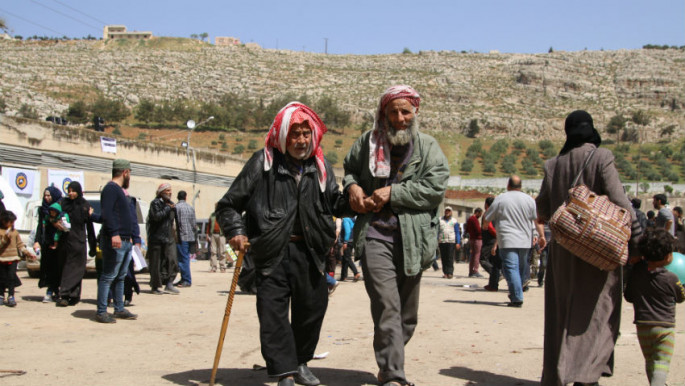 |
|
| [Aaref Watad] |
The first priority for the response coordination team, including the Syrian Civil Defence, known as The White Helmets, as well as The Violet Organisation, is to transport the injured to hospitals and temporary healthcare centres.
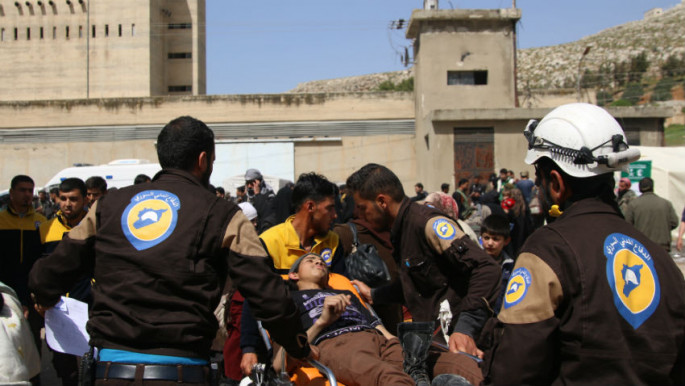 |
|
| [Aaref Watad] |
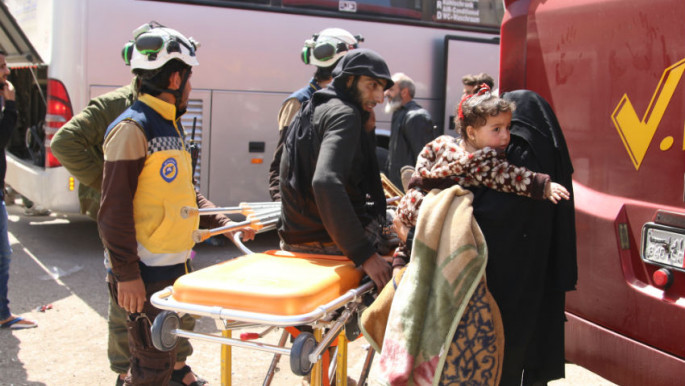 |
|
| [Aaref Watad] |
The new arrivals wait for family members to arrive from the bus convoy, as they gather all their belongings they could manage from their homes.
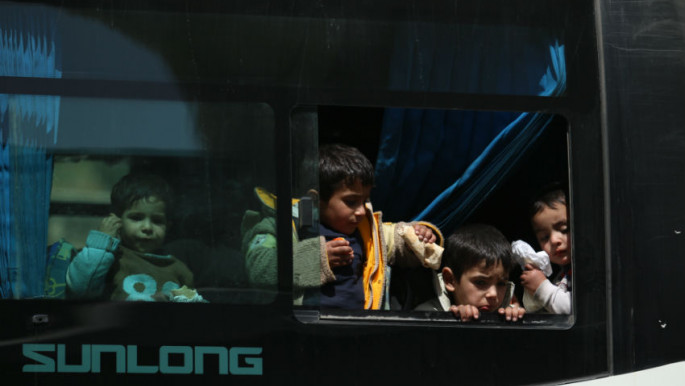 |
|
| [Aaref Watad] |
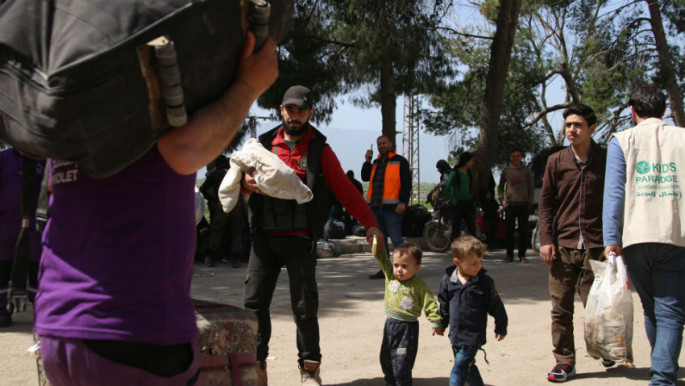 |
|
| [Aaref Watad] |
The evacuees will be resettled in villages in the opposition-held Aleppo countryside in northwestern Syria.
 |
|
| [Aaref Watad] |
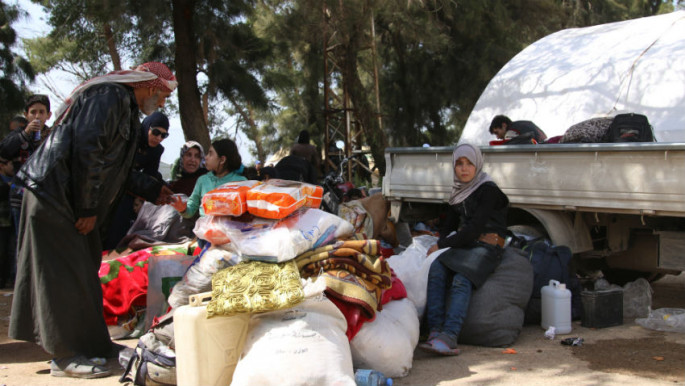 |
|
| [Aaref Watad] |
In relative to their hometown, Idlib will provide some peace and security. However the rebel-held province is still subject to Russian and Syrian regime airstrikes, as Bashar al-Assad aims to retake the whole of the country from opposition control.
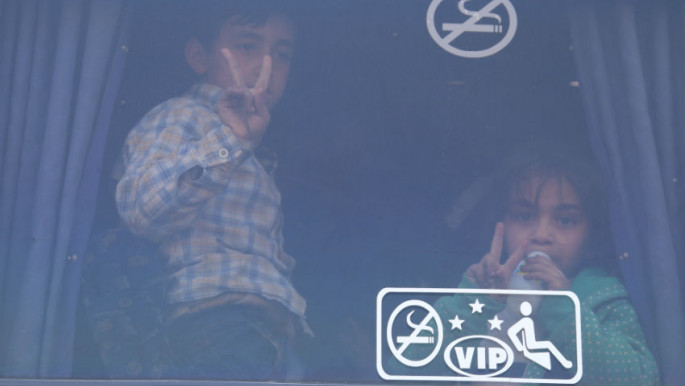 |
|
| [Aaref Watad] |
 |
|
| [Aaref Watad] |
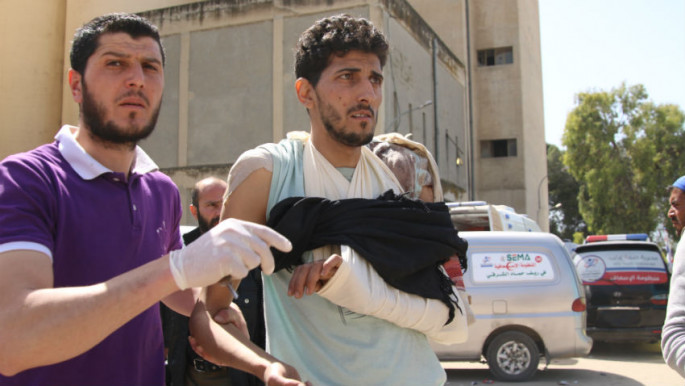 |
|
| [Aaref Watad] |
During the Assad regime's escalation on Eastern Ghouta, more than 1,630 civilians were killed, including at least 330 children. Eastern Ghouta's residents were forced to live in poorly ventilated underground shelters without sufficient food, water or medical supplies.
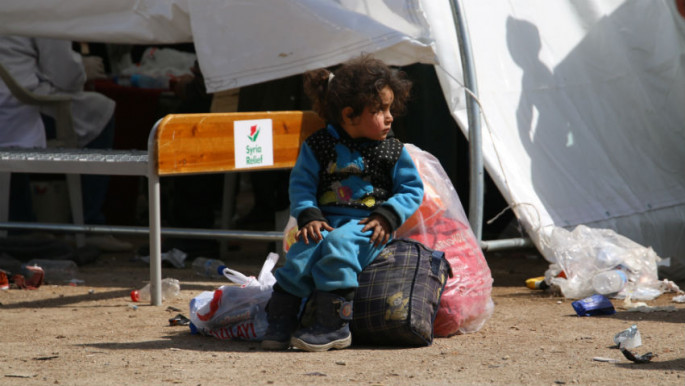 |
|
| [Aaref Watad] |
The offensive in Ghouta has been one of the deadliest of the war. Currently, at least 170,000 people have been evacuated out of the area over the past two weeks.
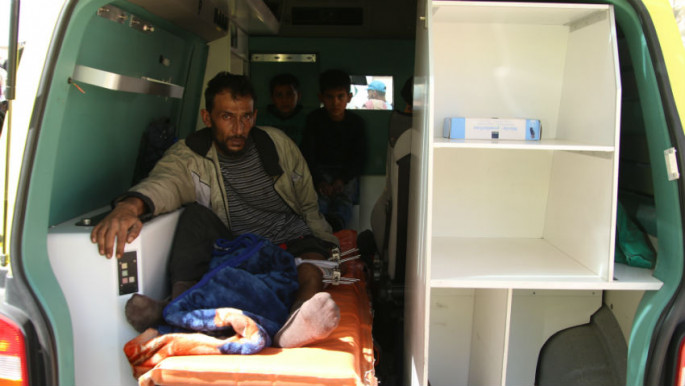 |
|
| [Aaref Watad] |
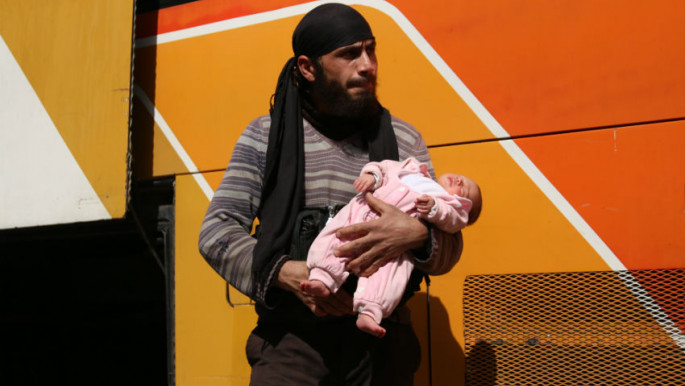 |
|
| [Aaref Watad] |
Having forced all but one of the rebel factions to make deals ceding parts of Eastern Ghouta, the Assad regime now controls 90 percent of Eastern Ghouta’s territory, the loss of which was a painful blow to opposition factions.
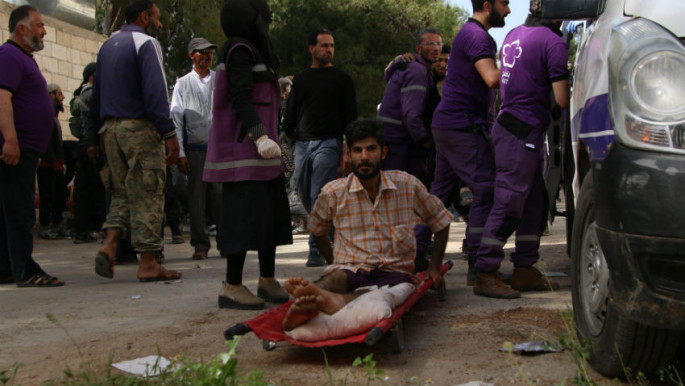 |
|
| [Aaref Watad] |
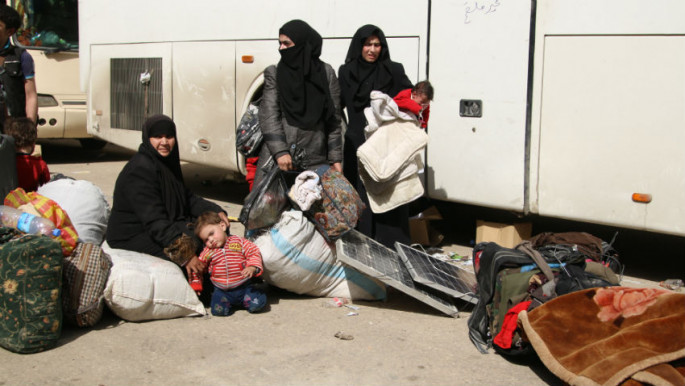 |
|
| [Aaref Watad] |
The Syrian conflict began when the Baath regime, in power since 1963 and led by President Bashar al-Assad, responded with military force to peaceful protests demanding democratic reforms during the Arab Spring wave of uprisings, triggering an armed rebellion fuelled by mass defections from the Syrian army.
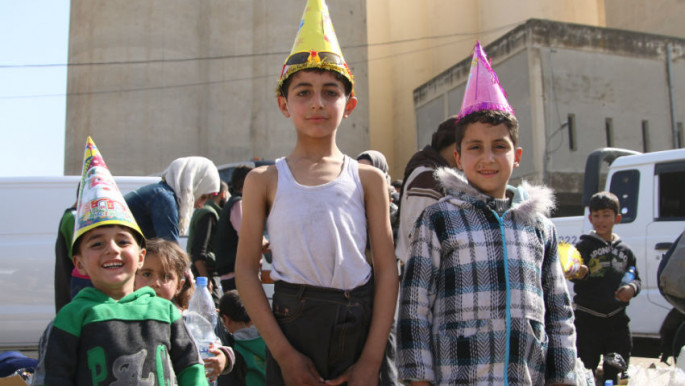 |
|
| [Aaref Watad] |
According to independent monitors, hundreds of thousands of civilians have been killed in the war, mostly by the regime and its powerful allies, and millions have been displaced both inside and outside of Syria. The brutal tactics pursued mainly by the regime, which have included the use of chemical weapons, sieges, mass executions and torture against civilians have led to war crimes investigations.
Aaref Watad is a journalist and photographer from northern Syria. Follow him on Twitter @aboshamariha

![Palestinians mourned the victims of an Israeli strike on Deir al-Balah [Getty]](/sites/default/files/styles/image_684x385/public/2024-11/GettyImages-2182362043.jpg?h=199d8c1f&itok=xSHZFbmc)


![The law could be enforced against teachers without prior notice [Getty]](/sites/default/files/styles/image_684x385/public/2178740715.jpeg?h=a5f2f23a&itok=hnqrCS4x)


